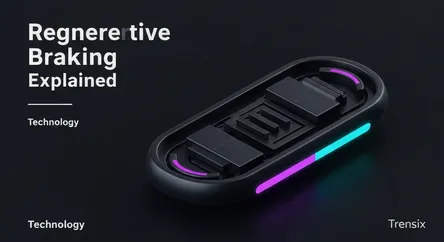Technology
Regenerative Braking Explained

Discover how regenerative braking works in EVs and hybrids to recapture energy, extend driving range, and reduce brake wear. Learn why it's a key feature.
What is it?
Regenerative braking is a smart energy recovery mechanism used primarily in electric (EV) and hybrid vehicles. Instead of relying solely on traditional friction brakes that convert kinetic energy into wasted heat, this system does the opposite. When the driver slows down or takes their foot off the accelerator, the electric motor essentially runs in reverse, acting as a generator. It converts the car's momentum back into electrical energy, which is then used to recharge the vehicle's battery. This process creates resistance that slows the vehicle down, complementing the conventional brakes.
Why is it trending?
The rise of electric vehicles has pushed regenerative braking into the spotlight. As consumers and manufacturers focus on maximizing driving range and efficiency, this technology has become a critical feature. It directly addresses 'range anxiety' by adding miles back to the battery during everyday driving, especially in stop-and-go city traffic. Automakers are constantly refining these systems, making them more powerful and efficient, which often becomes a key selling point and a topic of discussion among EV enthusiasts and potential buyers.
How does it affect people?
For drivers, the most significant impact is increased efficiency and a longer driving range on a single charge. This translates to lower running costs. It also reduces wear and tear on traditional brake pads and rotors, leading to less frequent maintenance and lower ownership costs. Furthermore, it changes the driving feel, enabling a feature known as 'one-pedal driving.' Drivers can accelerate and decelerate the car significantly just by using the accelerator pedal, making urban driving smoother, less strenuous, and more engaging.